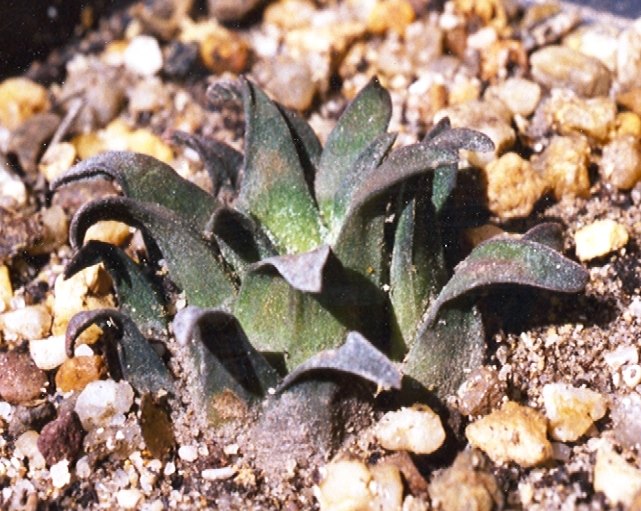40. 2019.6.13 – How does one know anything? Why I ask is because I have so often heard strong opinions based on a great degree of ignorance. The revision process in plant classification is built on the accumulation of information. At one stage all known Haworthias were 5 small Aloe species. It has been pretty much chaos ever since. There are many total imponderables within Haworthia even in its purest form i.e. with Haworthiopsis and Tulista excluded. While it is difficult enough to arrive at a reasonable guess as to what a population may be, it is very much more difficult to explain an own informed guess to someone convinced of something else on the basis of near nothing. Can one explain to a frog in a pond that has not even seen the other side of it, what the ocean is like? At the same time one should not expect the ignorant to take a blind leap of faith. H. groenewaldii as H. mutica, needs to be seen in this context and there is a lot of peripheral stuff that needs to be explained. I did not think H. floribunda was going to be so central to my story, but it is. It occurs across the range of the retusoids from the Gouritz River in the east to west of the Breede River in the south. But it gets lost among the mirabiloids along a east/west line between Riversdale and Swellendam. What it does at Swellendam is extraordinary. Floribunda is a rather inconspicuous small plant characterised by a flattened leaf and rounded leaf-tip. It is this character that seems to be infused into the mirabiloid/retusoids suggesting that H. floribunda itself may be essential to that group. BUT it has its own complications in that it can be seen to be linked to H. variegata, H. parksiana and H. chlorocantha. How does one know that? It is an opinion probably arising solely from seeing so many things in the field that suggest this. Judging from all my pictures, its chief character seems to be that it is non-photogenic. It does incline to be well drawn into the soil with at least half the leaves below soil surface. My pictures are appalling but here are some to give an idea of what “floribunda” may look like, before I show what it is like at Swellendam.
Some of the weak points emerging in my story…
1. Starting point. Perhaps I should have said a lot more. A great deal more. I had a plant from N Bredasdorp that was H. mutica by my identification, and another from N Mossel Bay as H. pygmaea. They were absolutely identical except for the colour of the floral bracts. And I had B/W pictures from G.G.Smith’s draft “monograph” of plants from Buffeljags River Swellendam, and from Kransriviermond Heidelberg that Smith had labelled H. mutica. These also looked nearly identical.
2. Missing pictures. I have no decent pictorial record of my field activity until I got a digital camera about 12 years ago. So there are gaps in the photographic record.
3. Too much to digest. I have about 300 populations relevant to the story with an average of about 10 pictures/population plus the whole historical record. I can’t throw one out without feeling my story is diminished. How does one transmit the combined picture of all these images to anyone else when some of it is forgotten or incorrectly memorised?
4. Inadequate flowering time data.
5. Inadequate understanding of the geological facts and the time scales involved.
6. I suspect there may be more.




